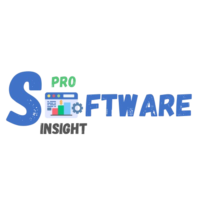The Ultimate Guide to Admission Management Software 2025

Managing student admissions efficiently is one of the most critical challenges for educational institutions today. The traditional, manual approach to handling applications, verifying documents, and managing enrollments is not only time-consuming but also prone to errors. This is where admission management software comes into play, streamlining the entire process while enhancing accuracy, efficiency, and the applicant experience.
Whether you’re running a university, college, school, or any other educational institution, implementing a robust admission system can save you significant time and resources. In this article, we will explore what admission management software is, its benefits, challenges, and how to choose the right one for your institution.
What Is Admission Management Software?
Admission management software is a specialized digital solution designed to automate and streamline the student enrollment process. It facilitates various tasks, including online applications, document verification, fee payments, interview scheduling, and communication with applicants. By integrating with existing educational management systems, this software ensures a seamless transition from inquiry to enrollment.
Benefits of Using Admission Management Software
1. Time and Cost Efficiency
Automating the admission process reduces administrative workload, minimizes errors, and speeds up decision-making. Institutions can reallocate resources to more critical tasks rather than manual data entry.
2. Improved Applicant Experience
A user-friendly online application portal enhances the student experience, allowing them to apply from anywhere, track their status, and receive instant updates.
3. Enhanced Accuracy & Compliance
Human errors in manual data entry can lead to costly mistakes. Admission software reduces these errors and ensures compliance with regulatory requirements.
4. Data-Driven Decision Making
Real-time analytics provide insights into application trends, helping institutions optimize marketing strategies and admission policies.
5. Scalability & Customization
As institutions grow, the software can be customized to handle increased application volumes, multiple campuses, and diverse admission criteria.
Challenges & Considerations
- Implementation Costs: High-quality admission software comes at a price. Institutions must evaluate their budget and choose a solution that offers the best return on investment.
- Data Security & Privacy Concerns: Handling sensitive student information requires robust security measures, including encryption, multi-factor authentication, and compliance with data protection laws like GDPR and FERPA.
- Training & Adoption: Staff and applicants need to be trained to use the system effectively. Institutions should ensure the software provider offers adequate training and customer support.
- Integration with Existing Systems: For smooth operation, admission software should integrate with other institutional platforms such as Learning Management Systems (LMS), SIS, and financial software.
Key Features of Admission Management Software
- Online Application Portal: Allows students to submit applications digitally, reducing paperwork.
- Automated Document Verification: Verifies uploaded documents using AI-powered algorithms.
- Application Tracking: Enables both applicants and administrators to track application status in real time.
- Fee Management: Facilitates online payments and generates automated invoices.
- Communication Tools: Sends automated emails, SMS notifications, and reminders.
- Integration with Student Information Systems (SIS): Ensures smooth data transfer across departments.
- Reporting & Analytics: Generates detailed reports to aid decision-making.
FAQs
Is admission management software suitable for small institutions?
Yes, many providers offer scalable solutions tailored for smaller institutions, ensuring affordability and ease of use.
Can this software handle international applications?
Most modern admission software supports multi-language functionality and currency conversion, making it suitable for international applicants.
How long does it take to implement an admission management system?
Implementation time varies but typically ranges from a few weeks to a few months, depending on the complexity of the system and institutional requirements.
Conclusion
Investing in the right admission management software can significantly enhance the efficiency and effectiveness of your institution’s enrollment process. From reducing administrative burdens to improving applicant experiences, the benefits are undeniable. However, institutions must carefully evaluate features, scalability, security, and integration capabilities before making a decision.
